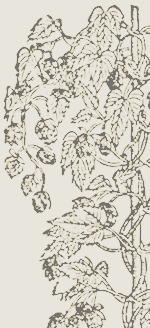
 Notturno Hummel (arr. J D Rose) flute/piccolo, clarinet(E flat), 3 clarinets, 2 horns, trumpet, bass trombone, 2 bassoons Catalogue Number: HV065 Skill level (A-E): D/E Johann Nepomuk Hummel was born in Pressburg (now in Hungary) in November 1778. He was something of a prodigy, starting his musical tuition at the age of three and was able to play the piano so well by the age of six that he became a member of Mozart's household for two years. In parallels with Mozart's life he and his father made a successful tour of several European countries, returning to Vienna in 1793. He continued his studies there with composers such as Haydn and Salieri, eventually becoming one of the most celebrated virtuoso pianists of the time. It is probable that the professional rivalry between Beethoven and Hummel started during his early years in Vienna as they both had the same tutors. Opinion was divided on who was the better performer: Hummel, known for his open and modest character, was probably more exact in his playing than the more complex character of Beethoven — although the record of the rivalry is coloured by the clearly partisan approach of the writers of the time. Despite this there was a respectful friendship between the two composers and Hummel played at Beethoven's memorial concert, fulfilling the latter's wishes. Hummel was a prolific composer for piano, but he also wrote chamber, concerti, orchestral and choral music, including operas and masses. His style is classical and when he died in 1837 a musical era that started with Haydn and Mozart came to an end. This Notturno (Op. 99) was originally written for piano (four hands) with a pair of optional French horns. Hummel himself arranged it for flute (or oboe) and orchestra (Op. 102); later Glinka arranged it for 2 violins and orchestra. The arrangement here is by J.D. Rose about whom we have no information. It was probably arranged for a military band style of ensemble during the mid to late 19th Century. The original cover indicates that it was arranged for Piccolo, Clarinet in F, 3 Clarinets in B flat, 2 Horns, 2 Bassoons Trumpet and Trombone. However the parts are clearly marked for Flautino in F (Piccolo) and Bass Trombone (Trombone). Flautino in FDuring the 19th Century wind bands consisting entirely of flutes of various sizes were popular. These sizes and, therefore,
pitches were named and written according to a different scheme to that which is common today. Instruments were named
according to the lower note that was produced when all six fingers were down. For example on bassoons this is The Flautino in F for which this Notturno is scored would seem to be the F Piccolo instrument. However the part indicates several instrument changes that may make this uncertain:
The Soprano or F Flute sounds a minor third higher than the concert flute and has, at times, been referred to as the
Clarinetto in FThis clarinet was popular amongst bands of the early to middle 19th Century but has now completely disappeared from use. This edition gives an E-flat part (as well as the original F) for this clarinet. |



